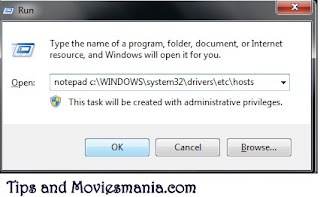If you’re like me and own lots of domains for more than one business interest, you know that it can be challenging to keep everything organized (not just with domains, btw).
I’ve learned some valuable lessons about managing a portfolio domains. These are simple, but they’ll save you time and money down the road as your business interests grow and, ultimately, make it big.
1. When in doubt, buy them outThis one’s not so much about management, but it’s worth passing along. When your company is in the spitball phase of trying to come up with a winning name, buy
every single domain you think has a chance of being the final pick. Here’s why: first, don’t
ever leave it to chance that the domain will be available tomorrow. You never know who is watching. The last thing you want to do is to have to go pay someone for the domain you really want. Second, you may forget. Sounds dumb, but that stroke of genious you have can easily vanish into thin air because you’re attention got drawn to some other important detail. Buy that great name before it leaves your brain.
2. New company = new accountStarting a new company? Buy the domains under a separate account with your registrar. Don’t make the common mistake of buying every single domain via one account. Next thing you know you have 200 domains for 5 companies all under the same registrar’s account. Besides being a total nightmare to manage, here are some practical reasons why you want to keep things clean:
3. Get started on the right foot legally and with your partners
It’s better to show that your new business entity own the domains instead of you. The domains are assets after all. Plus, show your business partners that you’re not hoarding the domains yourself. Show everyone you’re a team player.
4. Make billing less complicated
Having all domains in one account can be a huge pain when it comes to billing. If you don’t have each company renewing it’s own domains, you’ll get into a situation where you need to renew and then be reimbursed. That’s a pain that can easily be avoided with separate accounts.
5. Stay under the radar
I fully support the notion of keeping your startup in stealth mode until there’s actually something tangible to talk about. Stealth mode has to include keeping your WHOIS information either private or under the name of the company. The last thing an outsider should see is the CEO’s name on WHOIS. That’s not stealth. Separate accounts means you can manage separate identities easier.
6. Lord Google is watchingI’ve said it before,
Google rules the world. In this case, you don’t want Google thinking you own a lot of domains. Being the entrepreneur that you are, there will probably come a day when your domains will need to link to each other. Having all of your domains under your name on WHOIS and all under one account (and one IP address) may lead Google to think you are trying to create a link farm. And if they think that, they might slap you. You don’t want that.
7. Easier transition
This is the most fun reason to keep your domains nice and neatly organized: when it comes time to sell the company, it’s about a billion times easier to transition the domains to the buyer when they are organized in their own account. Not to mention due diligence is much more efficient because you won’t have to pour through your master domain account looking for the domains the selling entity owns (and risk making a mistake). The last sale I was part of involved nearly 100 domains. We literally had them transfered in about 5 minutes thanks to being organized.
What are your thoughts? Any additional tips you want to add? Let’s discus in the comment section below.






 at the top right corner of your chat window.
at the top right corner of your chat window.
